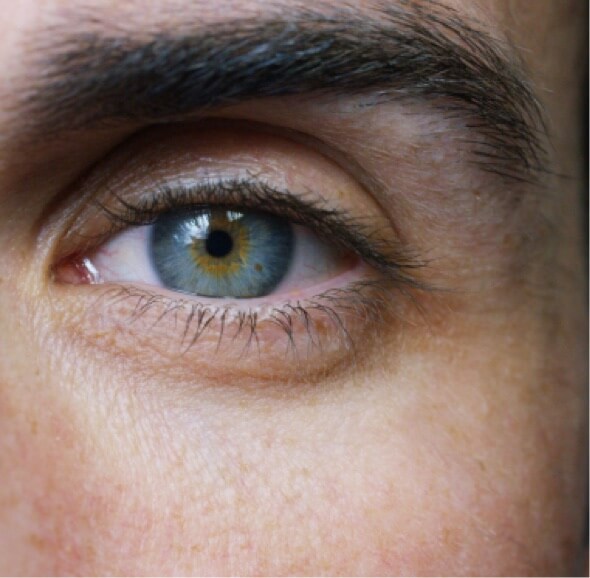DMEK Corneal Transplant
What is DMEK?

Descemet’s Membrane Endothelial Keratoplasty, known as DMEK, is a corneal transplantation procedure that involves replacing the inner one percent of the cornea, Descemet’s membrane, and the associated endothelial cells. DMEK is used to reduce swelling and restore vision in patients with endothelial cell disorders, such as Fuchs’ endothelial dystrophy, failed previous corneal transplants and bullous keratopathy. These cells keep the cornea thin by pumping out fluid. We are born with a tremendous number of these cells. However, unlike most cells, endothelial cells cannot regenerate. If an endothelial cell dies or becomes damaged, no new cell takes its place. If a critical number of endothelial cells malfunction or die, the cornea swells and the patient’s vision becomes blurry and distorted.
Fuchs’ Dystrophy
Fuchs’ dystrophy is one of the most common types of Corneal Dystrophies. In Fuch’sdystrophy, endothelial cells morph into dysfunctional cells known as guttata. Many people have a very mild version of this disease that causes no symptoms. However, if more guttata form, the remaining endothelial cells cannot adequately keep fluid out of the cornea, resulting in decreased vision.
Corneal Edema
Cataract surgery always causes at least some endothelial cell damage. With most patients, this damage is insignificant because there is an abundance of healthy endothelial cells remaining that can sufficiently pump out fluid. However, patients with Fuch’s dystrophy are more at risk for swelling after cataract surgery because they may not have an adequate number of remaining healthy endothelial cells. In situations where the cataract surgery becomes complicated, even patients with previously healthy endothelial cells can have swelling due to cell damage during surgery. Laser-assisted cataract surgery reduces the amount of inflammation.

What is DMEK surgery like?
During DMEK, the patient’s existing endothelium is removed and replaced with this specially prepared donor tissue. After the patient is prepped for the procedure and their diseased tissue is removed, a device similar to a syringe containing the donated corneal tissue is then inserted through the same small incision in the eye of the patient that was used for the removal of the diseased tissue and the new tissue is placed in the eye.
Once a DMEK graft is placed into the patient’s eye, it usually curls up into a scroll. The scroll has to be unrolled and the surgeon has to determine which side should face the recipient cornea and which side should face the inside of the eye. To unroll the scroll, the surgeon uses a gas bubble and a few surgical tools to ensure the tissue is correctly placed.
Finally, the surgeon ensures the amount of gas is correct. This is an important step because the gas is used to hold the tissue in the correct place. Too much gas or not enough gas can be problematic so it’s important to have the right amount. Lastly, the surgeon sutures the small opening that was made in the patient’s eye.
How do I know that DMEK is right for me?
Generally speaking, DMEK is preferable to be performed on patients that are dealing with a corneal edema after cataract surgery or have Fuchs’ Dystrophy. If you have corneal edema and your eyes are otherwise healthy and have good visual potential, then DMEK may be an option to correct your vision problems. However, if you are dealing with other ocular issues then another form of corneal surgery, Descemet’s Stripping Automated Endothelial Keratoplasty (DSAEK), maybe be more appropriate.
What are the advantages with DMEK?
There are several advantages to DMEK over other forms of cornea transplantation. As the current, most cutting edge procedure for the cornea, some of the biggest advantages are:
- The eye is left much stronger and more resistant to injury.
- There is minimal change in refractive error because the patient’s cornea is essentially intact.
- Suture-related problems can be eliminated.
- Visual recovery is significantly faster and better.
- Lowest rejection rate of any corneal transplant procedure(less than 1%)
Faster Healing Time
In a full-thickness corneal transplant, the surgeon needs to put in many sutures in a circle around the cornea. In DMEK, Dr. Friend and Dr. Merchant only need to put one suture on the edge of the cornea. Using only one suture greatly reduces the healing time, from over a year with a full-thickness corneal transplant to only three months with DSAEK.
Fewer Risks of Suture-Related Complications

In a full-thickness corneal transplant, patients tend to have much more astigmatism. This happens because even with the best surgical technique, the sutures are pulling in different directions with different tension, causing the cornea to heal with an irregular shape, known as astigmatism. Since DMEK only has one sutures on the cornea’s edge, the amount of astigmatism is greatly reduced. Because of astigmatism, patients with full-thickness corneal transplants are much more likely to need hard contact lenses or laser vision correction than patients who have DMEK.
Moreover, the fewer sutures also eliminates the risk of vascularization (abnormal or excessive formation of blood vessels, as in the retina or on the cornea) that can lead to transplant rejection.
[Reference: Hannush S, Aldave A, Perry H. Discover the Advantages of Endothelial Keratoplasty [Internet]. Ophthalmologymanagement.com. 2015 [cited 2015 Jun 1]. Available from: http://www.ophthalmologymanagement.com/articleviewer.aspx?articleID=106606]
Fewer Physical Restrictions, Post-operation
Fewer sutures mean patients also don’t have as many physical restrictions with DMEK, since the risk of breaking a suture is much less worrisome. DMEK is also much safer in the long run for patients because even after a full-thickness corneal transplant completely heals, the area of the cornea where the sutures were placed is always weaker than the rest of the eye. Due to this weakness, patients are more prone to damage after trauma than with DMEK.
What Are the Issues or Risks with DMEK?
While DMEK has not yet been widely adopted, the procedure shows promise as the next standard-of-care for many indications of endothelial keratoplasty. In contrast to other partial thickness corneal transplant procedures, such as DSAEK, DMEK replaces only the diseased tissue without need for additional or redundant tissue, which allows for a more precise and anatomically correct approach. As a result, DMEK has demonstrated lower risk of rejection, faster recovery, and better vision (a higher percentage of patients achieve 20/20 vision) than prior forms of corneal transplant.
The biggest hurdle with DMEK is the preparation of the donor tissue. Basically, the endothelium and attached membrane has to be peeled off the back of the donor cornea. The ultra-thin DMEK grafts are so fragile that sometimes the precious donor tissue tears while separating the layers and it cannot be salvaged. Descemet’s membrane is only about 15 microns thick! So, the preparation has to be done very carefully by the eye bank. Patients with DMEK are more likely to have their transplanted cornea shift off-center or improperly adhere to the rest of the cornea immediately after surgery. Therefore, there is a higher risk of needing to have a second surgery to rectify these complications. However, the success rate after a corrective procedure is very high.
Is There a Recovery Period After DMEK Surgery?
Typically, the patient is monitored for about two hours after surgery and then they are permitted to go home or to the hotel to rest. The patient will follow up the next day with their surgeon in the office.
Looking to get a corneal transplant? Think that DMEK might be right for you? We can go over all your options at Eye Care Associates of New Jersey! Come visit us in Glen Rock, give us a call at (201) 797-5100 or schedule an appointment!
Combined Cataract Surgery and DMEK Surgery
Cataracts and Fuchs’ Dystrophy are eye diseases that commonly occur as patients enter their fifties and sixties. Fuchs’ dystrophy affects the cornea, while cataracts affect the natural lens of the eye.
Fuchs’ Dystrophy is often accelerated by cataract surgery. In such situations, when both cataract and Fuchs’ Dystrophy are present, Cataract Surgery and DMEK or DSAEK surgery may be performed simultaneously.
Combining these procedures requires excellent surgical skills and experience. Dr. Friend and Dr. Merchant, two of the most highly respected corneal specialists in New Jersey, performs this challenging procedure on a regular basis.









